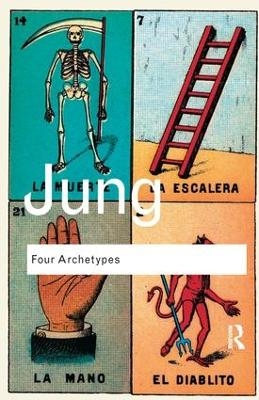
Four Archetypes
Routledge (Verlag)
978-1-138-43715-9 (ISBN)
The concept of the archetype is crucial to Jung's radical interpretation of the human mind. Jung believed that every person partakes of a universal or collective unconscious that persists through generations. The origins of the concept can be traced to his very first publication in 1902 and it remained central to his thought throughout his life. As well as explaining the theoretical background behind the idea, in Four Archetypes Jung describes the four archetypes that he considers fundamental to the psychological make-up of every individual: mother, rebirth, spirit and trickster. Exploring their role in myth, fairytale and scripture, Jung engages the reader in discoveries that challenge and enlighten the ways we perceive ourselves and others.
Carl Gustav Jung (1875-1961). Founded the analytical school of psychology and developed a radical new theory of the unconscious. Carl Gustav Jung (1875
Introduction 1, From “Archetypes of the Collective Unconscious,” first published in the Eranos-Jahrbuch 1934, and later revised and published in Von den Wurzeln des Bewusstseins (Zurich, 1954), from which version the present translation is made. The translation of the original version, by Stanley Dell, in The Integration of the Personality (New York, 1939; London, 1940), has been freely consulted.—E DITORS ; Part 1 Psychological Aspects of the Mother Archetype; pt1_Chapter 1 On the Concept of the Archetype; pt1_Chapter 2 The Mother Archetype; pt1_Chapter 3 The Mother-Complex; pt1_Chapter 4 Positive Aspects of the Mother-Complex; pt1_Chapter 5; Conclusion; Part 2 Concerning Rebirth; pt2_Chapter 1 Forms of Rebirth; pt2_Chapter 2 The Psychology of Rebirth; pt2_Chapter 3 A Typical set of Symbols Illustrating the Process of Transformation; Part 3 The Phenomenology of the Spirit in Fairytales; pt3_Chapter 1 The Phenomenology of the Spirit in Fairytales 1, First published as a lecture, “Zur Psychologie des Geistes,” in the Eranos-Jahrbuch 1945. Revised and published as “Zur Phänomenologie des Geistes im Märchen,” in Symbolik des Geistes (Zurich, 1948), from which the present translation was made. This translation was published in a slightly different form in Spirit and Nature (Papers from the Eranos Yearbooks, 1; New York, 1953; London, 1954).—E DITORS ; Part 4 On the Psychology of the Trickster-Figure; pt4_Chapter 1 On the Psychology of the Trickster-Figure 1, Originally published as Part 5 of Der göttliche Schelm, by Paul Radin, with commentaries by C. G. Jung and Carl Kerényi (Zurich, 1954). The present translation then appeared in the English version of the volume: The Trickster; A Study in American Indian Mythology (London and New York, 1956); it is republished here with only minor revisions.—E DITORS ;
| Erscheinungsdatum | 07.08.2017 |
|---|---|
| Reihe/Serie | Routledge Classics |
| Verlagsort | London |
| Sprache | englisch |
| Maße | 129 x 198 mm |
| Gewicht | 453 g |
| Themenwelt | Geisteswissenschaften ► Psychologie ► Psychoanalyse / Tiefenpsychologie |
| Medizin / Pharmazie ► Medizinische Fachgebiete ► Psychiatrie / Psychotherapie | |
| ISBN-10 | 1-138-43715-8 / 1138437158 |
| ISBN-13 | 978-1-138-43715-9 / 9781138437159 |
| Zustand | Neuware |
| Haben Sie eine Frage zum Produkt? |
aus dem Bereich


